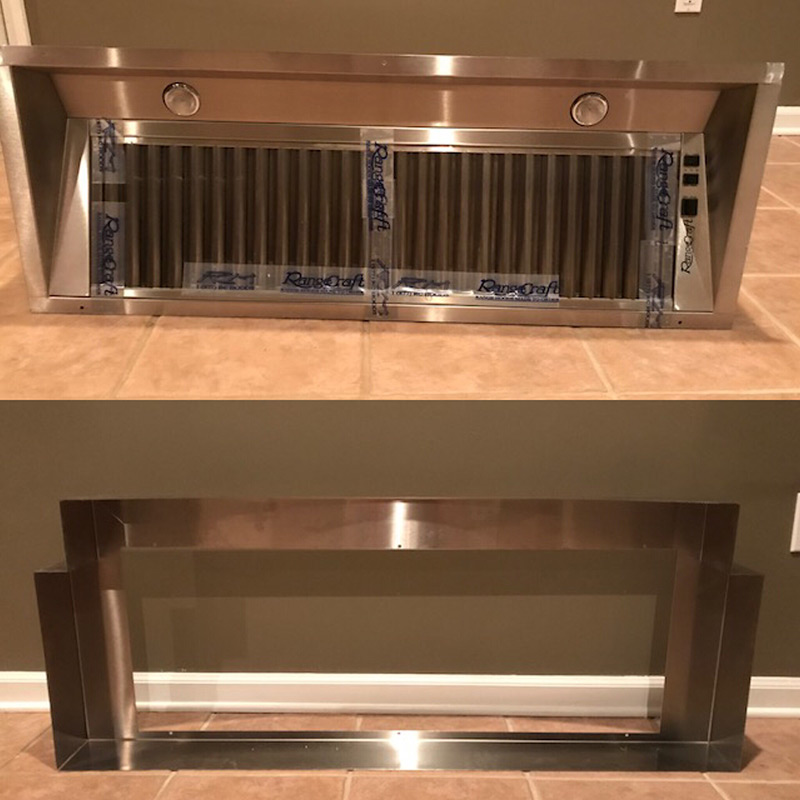This is a kitchen exhaust fan that is attached to a hood that is built underneath cabinets that is fitted with a range hood insert. Depending on the individual needs of each kitchen, it is available in a wide range of styles, sizes, and materials as well. The blowers come with a filter, a control panel, and a blower. There are usually 28” and 60” wide models, with a capacity of between 600 and 1200 cubic feet per minute. As well as cleaning the smoky and greasy gases from the kitchen, they also cool the hot air that comes from the oven. As range hood inserts are installed into custom hoods that are mounted under the cabinets, most of them are ducted systems. It is possible, however, to convert them into ductless systems based on the specifications of the customer, if they so desire. There is more information about range hood inserts in this article.
Structure
A range hood insert fits into a hood built into a cabinet or an island, as the name suggests. A range hood insert consists of stainless steel, a blower, and a control panel. In addition to copper, wood, and brass, kitchen range hood inserts can also be made to order.
Sometimes a kitchen range hood insert is referred to as a liner, probably because it is another layer added to an existing hood. More sophisticated inserts with built-in sensors are being introduced as a result of technological advancement, allowing them to turn on when the temperature over the cooktop changes. In some inserts, halogen lights with dimmer controls create an ambiance.

Types
Most range hood inserts are ducted, but some do not. It draws in lots of smoke and grease from the cooktop, and it brings in more fresh air from the outside. Therefore, it does not need to have a higher CFM rating. The ductless type, on the other hand, cleans fewer gases and does not bring in fresh air from outside.
The ductless inserts simply recirculate the hot air after purifying it, which is what gives them their power CFM rating. You will need a range hood insert with a CFM rating between 600 and 800 for home kitchens. For a commercial kitchen with heavy cooking, a range hood insert with a CFM rating above 1200 is needed.
Uses
The primary purpose of a range hood insert is to clean grease and smoke produced during cooking, while also replacing hot air with cool, fresh air. As a result, you and your family will be protected from harmful gases that would otherwise affect your breathing. On the lower part of the insert, a lighting system illuminates the cooktop, providing a great cooking experience.
Aside from saving you money on energy bills, lighting also contributes to the overall cooking process. Circulation of air provided by the range hood insert helps in eliminating the chances of the buildup of bacteria and germs due to grease produced by the stove when cooking. After all, a range hood insert improves the general value of the house by bringing the perfect look and feel, and this motivates you to try out your favorite recipes.
Installation
As long as you follow the installation instructions that come with your range hood insert, installing a range hood insert is a simple and easy process. In order to prevent electrocution, you need to make sure that you have turned off the power source before you begin the installation work.
It is just a matter of disassembling the hood from its control panel, blower, and filter, and using a spanner to remove the knockout on the power unit in order to install it again. Connect the power cables of the power unit to the electrical unit on the hood, and mount the hood unit on the power unit. A power screwdriver will be needed to fit the control panel, blower, and filter into the already mounted hood after it has been installed.
The next step is to turn on the power button to test the functionality of the insert and you are ready to go.
